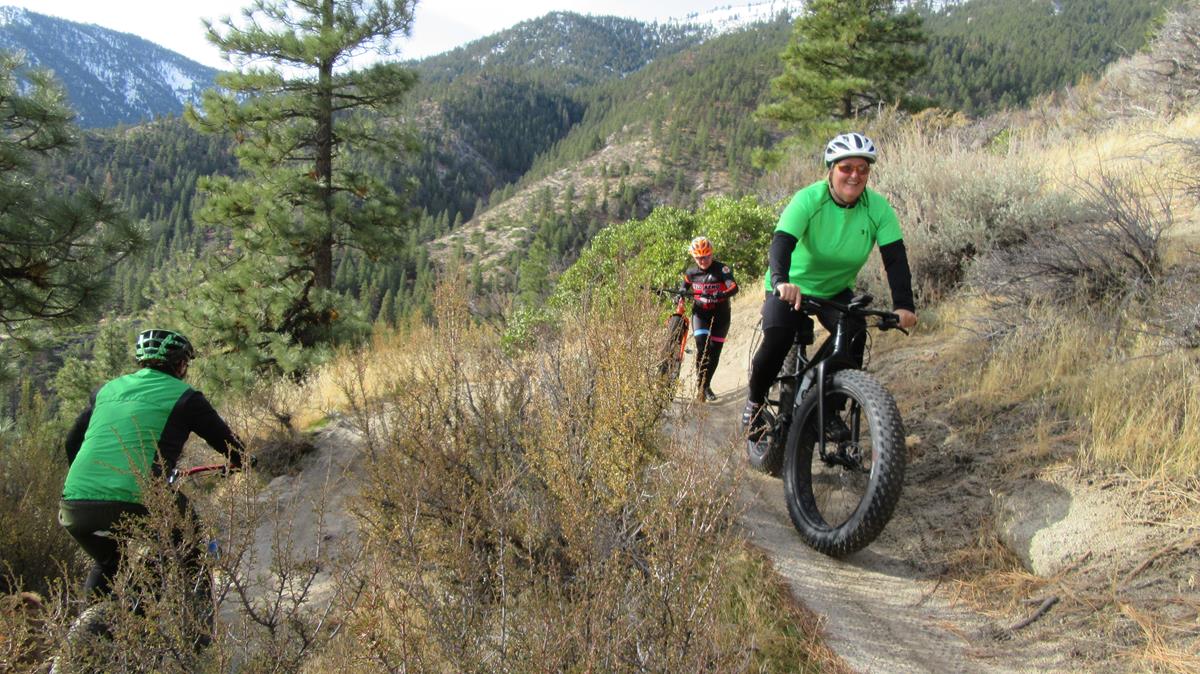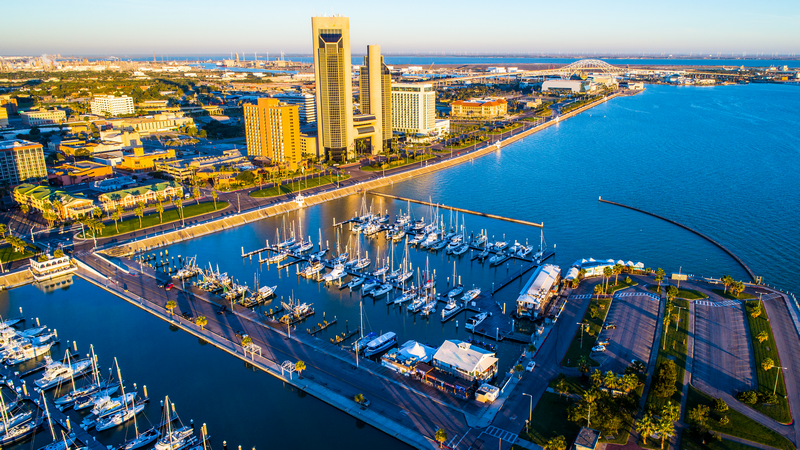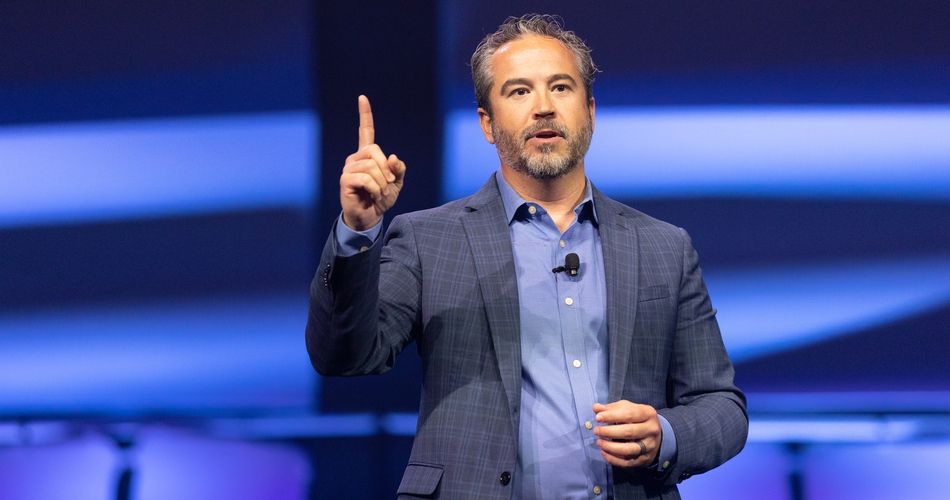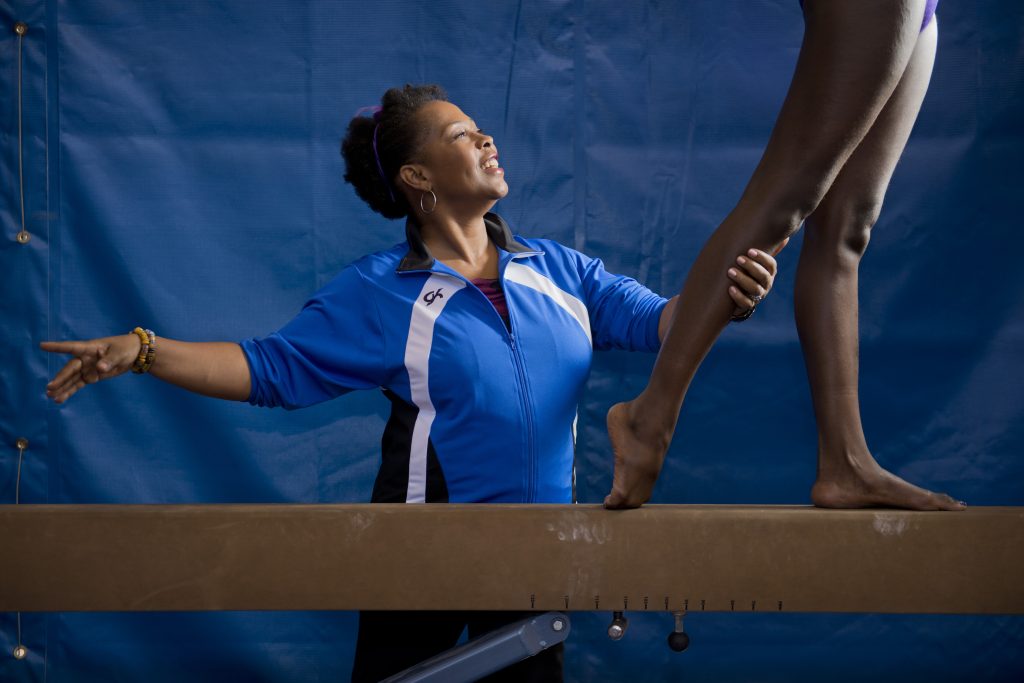Every year when the calendar flips to January, large segments of the country’s inhabitants face the challenge of attempting to exercise despite temperatures reaching bone-chilling levels.
Outdoor enthusiasts, in particular, struggle to maintain their fitness rituals when ice and snow cloak their favorite running or biking trails for months at a time.
This polar predicament helps explain why fat tire biking, a one-time niche sport, continues to grow in popularity.
Fat tire biking consists of riders utilizing a fat tire bike (also called a fat bike), an off-road bicycle containing oversized tires which typically range between 3.8 and 5 inches. These wide tires can be used with inflation pressures as low as 5 pounds per square inch (traditional road bicycle tires usually require 80 to 130 pounds per square inch and mountain tires generally range between 25 to 35 psi).
The low-pressure tires are designed to enable riders to traverse soft, unstable terrain such as snow, mud and sand. Thus, inclement weather, which is traditionally anathema to outdoor competitors, isn’t a deterrent for fat tire bicyclists. Cyclists can ride fat tire bicycles year-round, enabling them to enjoy fresh air, avoid crippling cabin fever and get their heart racing.
Because of their low tire pressure, fat tire bicycles (which weigh between 20 and 37 pounds) offer riders a fat-burning cardio workout in which they can burn around 1,500 calories per hour. Couple that with the freedom they provide – fat tire bikes enable riders to cover terrain traditional bicycles can’t reach – and these bikes have become an integral part of many people’s athletic lives. 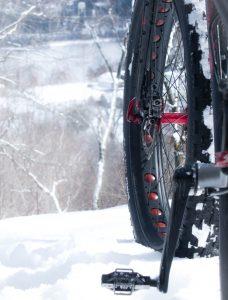
Although fat tire bicycles have been around in some form since the turn of the 20th century, it is commonly accepted the current model of bikes entered the public’s eye in Alaska and southern New Mexico in the late 1980s.
During that time, bicycle frame builders in Anchorage, Alaska built larger frames that could hold the equivalent of two or three tires in the hopes these more substantial tires could better help riders tackle grueling events like Alaska’s 1,000-mile Iditarod Trail. At the same time in New Mexico, similarly inspired frame builders created fat tire bicycles that could handle the sands of the Mexican and Southwest dunes.
Thus, like the BMX bike craze of the 1970s and the lure of conventional mountain bikes in the 1980s, a new cycling passion was spawned.
Fat bikes didn’t immediately spark a furor, but extreme sports enthusiasts appreciated this bicycle that allowed them to explore some of the planet’s more intense locales. For years, fat tire bikes were mostly embraced by thrill seekers, but in 2005, the bicycles started gaining popularity and since 2013, it has been reported fat bikes have seen a 350 percent increase in sales. The NPD Group, which tracks retail sales of bicycles in the United States, reports fat tire bike sales have surged to $74.7 million as recently as 2016.
Numerous winter destinations have taken notice of that growth as locales like Aspen, Colorado; Park City, Utah; and East Burke, Vermont, to name a few, offer fat bike rentals at ski resorts and Nordic centers.
Fat Tire Competitions Gain Traction
While fat tire bicycles are popular among recreational riders, the sport also has a growing competitive scene.
The Borealis Fat Bike World Championships are an annual event held in Crested Butte, Colorado, a town popular with skiers and mountain bikers located 227 miles southwest of Denver.
This four-day event attracts upwards of 280 riders who compete at 9,000 feet of elevation and has garnered a reputation for being as much of a festive atmosphere as a competition. The third-annual event took place in January of 2018, with the championship race covering 32 miles and five laps taking place on a 6.3-mile loop.
Since 2015, USA Cycling has embraced fat bikes, as the federation has hosted its own sanctioned Fat Bike National Championship. The 2018 edition of this event takes place February 8 through February 11, 2018, in Grand Rapids, Michigan. Riders of all ages will compete in an 18-mile race while professional men and women will traverse a 24-mile course.
While the aforementioned competitions are fledgling events, the Chequamegon Fat Tire Festival is anything but. This race, scheduled for September 15, 2018, is an annual festival that has been going strong for 35 years. Each year in mid-September, thousands of fat-tired cyclists visit the towns of Cable and Hayward in northwestern Wisconsin, to participate in off-road bicycle tests of endurance and agility.
The first festival began in 1983 and featured 27 cyclists competing in a point-to-point 40-mile off-road event from Hayward to Cable. Today, the competition features 3,100 competitors enjoying the rolling glacial terrain of the area’s forests.
A Communal Ride 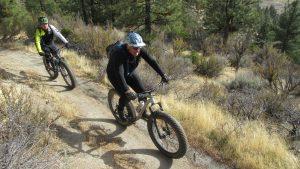
Crested Butte and northwestern Wisconsin may have established themselves as fat biking havens, but they are hardly alone as the sport has taken a foothold across the country.
The fat bike phenomenon has been a boon to wintry areas that previously could be described as outposts, as formerly seasonal cyclists use fat tire bicycles to embrace their passion all year. Locales such as Alta, Wyoming; Ironton, Minnesota; and McCall, Idaho are just a few less heralded territories that have become destination retreats for fat tire bikers seeking unique trails to explore.
In response to this, most bicycle shops, whether they reside in Maine or Montana, sell fat bikes, and the sport has even spawned a Global Fat Bike Summit.
Perhaps the biggest indicator of the popularity of fat bikes is the arrival of Global Fat Bike Day, which in 2017 took place on December 2. On that day, fat bike zealots around the world not only braved the elements to share communal rides, they displayed photographs and videos of their excursions across social media, further bringing fat tire bicycles into the public’s consciousness and unifying a community searching for new adventures.
Ten Best Fat Tire Bike Trails in the United States
1. Chequamegon National Forest, outside of Hayward, Wisconsin
Considered by many the ultimate biking destination thanks to the 35-year-old Chequamegon Fat Tire Festival, this forest offers more than 300 miles of trails, with 12 of those miles machine-groomed exclusively for fat tire biking.
2. Crested Butte, Colorado
Crested Butte has established itself as a mountain biking destination and is home of the Borealis Fat Bike World Championships, and offers miles of open trails, with some groomed and others that run off-road and provide spectacular views of the Colorado scenery.
3. Cuyuna Mountain Bike Trail System, Ironton, Minnesota
Ranked at the Silver Level by the International Mountain Biking Association, this trail system features more than 25 miles of riding spread across 800 acres of paved and singletrack trails.
4. Durango Nordic Center, Durango, Colorado
Nestled at the base of Engineer Mountain and the Twilight Peaks, the Durango Nordic Center offers more than 12 miles of trails groomed daily for fat bikes and holds fat bike races alongside skate ski races.
5. Grand Targhee Resort, Alta, Wyoming
Grand Targhee is the first ski resort in the United States to embrace and endorse winter fat bikes on the Nordic Trail system. Grand Targhee offers fat bikers more than nine miles of groomed Nordic track and two miles of singletrack trails.
6. Jug Mountain Ranch, McCall, Idaho
Jug Mountain features more than six miles of groomed fat bike-specific singletrack and also offers an additional eight miles of shared-use Nordic trails, giving fat bikers 14 miles to traverse.
7. Kincaid Park, Anchorage, Alaska
With Anchorage considered one of the birthplaces of fat tire biking (along with New Mexico), it’s no surprise the area offers top-notch trails. Kincaid Park features 16 miles of singletrack that is groomed by volunteers, which creates a 2-to 3-foot firm, rideable trail.
8. Kingdom Trails, East Burke, Vermont
A renowned mountain bike destination during the summer, Kingdom Trails creates a 20-mile network of snow machine-packed trails for fat bikes every winter.
9. Marquette Snow Bike Route, Marquette, Michigan
This trail network was among the first in the country to pioneer machine grooming singletrack trails for fat biking. The snow bike route contains 15 miles of trail maintained specifically for fat biking.
10. North Lakeland Discovery Center, Manitowish Waters, Wisconsin
North Lakeland offers 1,300 acres of fat biking-ready frozen turf and a 12-mile trail system with portions groomed, featuring a variety of habitats along the Lake Michigan shoreline.

